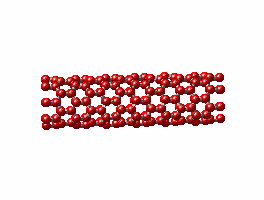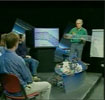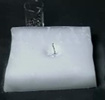| Date |
Daily Schedule ... Updated Sunday, November 09 :- 01:24 PM |
Thursday
Dec 16 |
Final - ISB 135 -
10:30-12:30pm
|
Thursday
Dec 09 |
Lecture
Material:
|
|
|
Exam III -- Results and Key |
Homework:
Announcements:
|
3. |
|
Final |
|
Help
Session - Sun, Dec 12, 4-6pm, ISB 135 |
|
4. |
|
Final |
|
Thursday,
December 16, ISB 135 - 10-30-12:30 |
|
Tuesday
Dec 07
|
Exam III - ISB 135 - 12:45-2:15pm
|
Thursday
Dec 02
Lecture 22
Slides |
Lecture
Material:
|
4.5 |
|
Stoichiometry
 Lab
Owls -- Review Lab
Owls -- Review |
Homework:
|
Owl |
|
8.11
|
|
Homework
|
--
|
Buffers Qualitative
|
|
12-06-10
|
Announcements:
|
1. |
|
Exam
III |
|
Help
Session - Sun, Dec 5, 4-6pm, ISB 221 |
|
2. |
|
Exam
III |
|
Tuesday,
December 7, In Class. |
|
|
|
|
|
--
3 or 4 questions will be taken from Lab Owls 3 and
4 |
|
3. |
|
Final |
|
Help
Session - Sun, Dec 12, 4-6pm, ISB 135 |
|
4. |
|
Final |
|
Thursday,
December 16, ISB 135 - 10-30-12:30 |
|
Tuesday
Nov 30
Lecture 21
Slides |
Lecture
Material:
|
8.11 |
|
How Do We Calculate the pH of a
Buffer |
|
4.5 |
|
Stoichiometry
 Lab
Owls -- Review Lab
Owls -- Review |
Homework:
|
Owl |
|
8.11d
|
|
Homework
|
--
|
pH of Buffer Solutions
|
|
12-02-10
|
|
|
|
8.11e
|
|
Homework
|
|
Calculate [A-]/[HA] of Buffer
Solutions
|
|
12-02-10
|
Announcements:
|
1. |
|
Exam
III |
|
Tuesday,
December 7, In Class. |
|
|
|
|
|
--
3 or 4 questions will be taken from Lab Owls 3 and
4 |
|
2. |
|
Final |
|
Thursday,
December 16, ISB 135 - 10-30-12:30 |
|
Thursday
Nov 25
|
Thanksgiving
|
Tuesday
Nov 23
Lecture 20
Slides |
Lecture
Material:
Homework:
|
Owl |
|
8.10c
|
|
Homework
|
--
|
Buffer Solutions Identify Buffer
|
|
11-30-10
|
|
|
|
8.10d
|
|
Homework
|
--
|
Write
Equation for Buffer Action
|
|
11-30-10
|
|
|
|
8.10e
|
|
Homework
|
--
|
Buffer Solutions - Buffer Capacity
|
|
11-30-10
|
|
|
|
8.11a
|
|
Simulation
|
--
|
pH of Buffer Solutions
|
|
11-30-10
|
|
|
|
8.11b
|
|
Simulation
|
--
|
Preparation of Buffer Solutions
|
|
11-30-10
|
Announcements:
|
1. |
|
Exam
III |
|
Tuesday,
December 7, In Class. |
|
2. |
|
Final |
|
Thursday,
December 16, ISB 135 - 10-30-12:30 |
|
Thursday
Nov 18
Lecture 19
Slides |
Lecture
Material:
Homework:
|
Owl |
|
8.3a
|
|
Exercise
|
--
|
Bronsted Acid-Base Reactions
|
|
11-24-10
|
|
|
|
8.3b
|
|
Homework
|
--
|
Bronsted Acid Base Pairs
|
|
11-24-10
|
|
|
|
8.3c
|
|
Homework
|
--
|
Conjugate Acid-Base Pairs
|
|
11-24-10
|
|
|
|
8.10a
|
|
Simulation
|
--
|
Buffer Solutions
|
|
11-24-10
|
|
|
|
8.10b
|
|
Tutor
|
--
|
Identifying Buffer Solutions
|
|
11-24-10
|
Announcements:
|
Tuesday
Nov 16
Lecture 18
Slides |
Lecture
Material:
Homework:
|
Owl |
|
8.8b
|
|
Homework
|
--
|
pH and pOH Calculations
|
|
11-18-10
|
|
|
|
8.8c
|
|
Homework
|
--
|
pH and pOH Ordering Acidity
|
|
11-18-10
|
|
|
|
8.8d
|
|
Tutor
|
--
|
The pH Scale
|
|
11-18-10
|
|
|
|
8.8e
|
|
Homework
|
--
|
Concentration to pH and pOH
Calculations
|
|
11-18-10
|
|
|
|
8.8f
|
|
Homework
|
--
|
pH and pOH to Concentration
Calculations
|
|
11-18-10
|
|
|
|
8.8g
|
|
Tutor
|
--
|
pH Strong Bases
|
|
11-18-10
|
Announcements:
|
Wednesday
Nov 10
Lecture 17
Slides |
Lecture
Material:
Homework:
|
Owl |
|
8.7a
|
|
Homework
|
--
|
Self-ionization of Water
|
|
11-16-10
|
|
|
|
8.8a
|
|
Simulation
|
--
|
The pH Scale
|
|
11-16-10
|
Announcements:
|
Tuesday
Nov 09
Lecture 16
Slides |
Lecture
Material:
Homework:
|
Owl |
|
7.7d
|
|
Homework
|
--
|
Le Chatelier's: Pressure
|
|
11-16-10
|
|
|
|
7.7e
|
|
Homework
|
|
Le Chatelier's: Multiple Effects
|
|
11-16-10
|
|
|
|
8.1b
|
|
Homework
|
|
Acids in Water
|
|
11-16-10
|
|
|
|
8.1c
|
|
Homework
|
|
Bases in Water
|
|
11-16-10
|
|
|
|
8.2a
|
|
Simulation
|
--
|
Acids
|
|
11-16-10
|
|
|
|
8.2b
|
|
Homework
|
|
Acid and Base Strength
|
|
11-16-10
|
|
|
|
8.5a
|
|
Homework
|
--
|
How To Use Logs and Antilogs
|
|
11-16-10
|
Announcements:
|
1. |
|
Wednesday,
Nov 10 |
|
Academic
Thursday -- Thursday schedule.. |
|
Thursday
Nov 04 |
Exam
II - ISB 135 - 12:45-2:15pm
|
Tuesday
Nov 02
Lecture 15
Slides |
Lecture
Material:
Homework:
|
Owl |
|
7.7b
|
|
Homework
|
--
|
Le Chatelier's: Temperature.
|
|
11-02-10
|
|
|
|
7.7c
|
|
Homework
|
--
|
Le Chatelier's: Temperature
|
|
11-02-10
|
Announcements:
|
1. |
|
Exam
II |
|
Thursday,
November 4, In Class. |
|
Thursday
Oct 28
Lecture 14
Slides |
Lecture
Material:
Homework:
|
Owl |
|
7.7a
|
|
Homework
|
--
|
Le Chatelier's: Concentration.
|
|
11-02-10
|
|
|
|
7.7b
|
|
Homework
|
--
|
Le Chatelier's: Temperature
|
|
11-02-10
|
|
|
|
7.7c
|
|
Homework
|
--
|
Le Chatelier's: Temperature
|
|
11-02-10
|
Announcements:
|
Tuesday
Oct 26
Lecture 13
Slides |
Lecture
Material:
Homework:
|
Owl |
|
7.6c
|
|
Tutor
|
--
|
Writing Equilibrium Expressions
|
|
11-02-10
|
|
|
|
7.6d
|
|
Homework
|
--
|
The Equilibrium Constant
|
|
11-02-10
|
|
|
|
7.6e
|
|
Homework
|
--
|
Equilibrium Relationships - Gas
Phase
|
|
11-02-10
|
|
|
|
7.6f
|
|
Homework
|
--
|
Equilibrium Relationships - Aqueous
|
|
11-02-10
|
|
|
|
7.6h
|
|
Homework
|
--
|
K Calculations - Aqueous
|
|
11-02-10
|
|
|
|
7.6i
|
|
Simulation
|
--
|
The Meaning of K
|
|
11-02-10
|
|
|
|
7.6j
|
|
Homework
|
--
|
Significance of K
|
|
11-02-10
|
Announcements:
|
1. |
|
Exam
II |
|
Thursday,
November 4, In Class. |
|
Thursday
Oct 21
Lecture 12
Slides |
Lecture
Material:
Homework:
|
Owl |
|
3.11b
|
|
Homework
|
--
|
Polarity from Molecular Model
|
|
10-26-10
|
|
|
|
3.11cb
|
|
Homework
|
--
|
Polarity from Formula
|
|
10-26-10
|
Announcements:
|
Tuesday
Oct 19
Lecture 11
Slides |
Lecture
Material:
Homework:
|
Owl |
|
3.10b
|
|
Homework
|
--
|
Ideal Repulsion Shapes
|
|
10-21-10
|
|
|
|
3.10c
|
|
Tutor
|
--
|
Determining Molecular Shapes
|
|
10-21-10
|
|
|
|
3.10d
|
|
Exercise
|
--
|
Determining Molecular Shapes
|
|
10-21-10
|
|
|
|
3.10e
|
|
Homework
|
--
|
Predicting Shapes of Molecules
|
|
10-21-10
|
|
|
|
3.10f
|
|
Homework
|
--
|
Draw Lewis -- Predict Geometry
|
|
10-21-10
|
|
|
|
3.10g
|
|
Homework
|
--
|
Given Lewis -- Predict Organic
Geometry
|
|
10-21-10
|
|
|
|
3.10h
|
|
Homework
|
--
|
Given Lewis -- Predict Angles
|
|
10-21-10
|
Announcements:
|
Thursday
Oct 14
Lecture 10
Slides |
Lecture
Material:
|
3.7 |
|
Drawing Lewis Structures of
Covalent Compounds
 Lewis
Dot Worksheet Lewis
Dot Worksheet
 Shortage of Electrons ... Multiple Bonds Shortage of Electrons ... Multiple Bonds |
|
3.9 |
|
Drawing Lewis Structures of
Covalent Compounds
 Choices ... Resonance
-- Simulation Choices ... Resonance
-- Simulation |
|
3.7 |
|
Drawing Lewis Structures of
Covalent Compounds
 Organic Molecules Organic Molecules |
|
3.8 |
|
Naming Binary Covalent Molecules |
Homework:
|
Owl |
|
3.9a
|
|
Tutor
|
--
|
Resonance Structures
|
|
10-19-10
|
|
|
|
3.9b
|
|
Homework
|
--
|
Resonance Structures
|
|
10-19-10
|
|
|
|
3.7i
|
|
Homework
|
--
|
Lewis Structures from Space Filled
|
|
10-19-10
|
|
|
|
3.7j
|
|
Homework
|
--
|
End of Chapter from Formula
|
|
10-19-10
|
|
|
|
3.8b
|
|
Homework
|
--
|
Naming Covalent Compounds
|
|
10-19-10
|
Announcements:
|
Tuesday
Oct
12 |
Academic Monday -- No
Class
|
Thursday
Oct 07
Lecture 9
Slides |
Lecture
Material:
Homework:
|
Owl |
|
3.7b
|
|
Tutor
|
--
|
Interpreting Lewis Structures
|
|
10-14-10
|
|
|
|
3.7c
|
|
Tutor
|
--
|
Exceptions to Octet Rule
|
|
10-14-10
|
|
|
|
3.7d
|
|
Homework
|
--
|
Interpret Lewis Structures
|
|
10-14-10
|
|
|
|
3.7e
|
|
Homework
|
--
|
Lewis Structures
|
|
10-14-10
|
|
|
|
3.7f
|
|
Exercise
|
--
|
Drawing Lewis Structures
|
|
10-14-10
|
|
|
|
3.7g
|
|
Tutor
|
--
|
Drawing Lewis Structures
|
|
10-14-10
|
|
|
|
3.7h
|
|
Homework
|
--
|
Drawing Lewis Structures
|
|
10-14-10
|
Announcements:
|
Tuesday
Oct 05
|
Exam
I - ISB 135 - 12:45-2:15pm
|
Thursday
Sep 30
Lecture 8
Slides |
Lecture
Material:
Homework:
|
Owl |
|
2.7a
|
|
Homework
|
--
|
Configurations & The
Periodic Table
|
|
10-04-10
|
|
|
|
2.7b
|
|
Homework
|
--
|
Main Group Electron Configurations
|
|
10-04-10
|
|
|
|
2.8a
|
|
Simulation
|
--
|
Atomic Size
|
|
10-04-10
|
|
|
|
2.8b
|
|
Homework
|
--
|
Atomic Size
|
|
10-04-10
|
|
|
|
2.8c
|
|
Homework
|
--
|
Ionization Energy
|
|
10-04-10
|
Announcements:
|
1. |
|
Exam
I |
|
Tuesday,
October 5, In Class. |
|
2. |
|
Help
Session |
|
Sunday,
October 3, 2-4pm, ISB 135 |
|
Tuesday
Sep 28
Lecture 7
Slides |
Lecture
Material:
Homework:
|
Owl |
|
2.6d
|
|
Simulation -- Electron
Configurations
|
|
09-30-10
|
|
|
|
2.6e
|
|
Tutor -- Electron Configurations 2
|
|
09-30-10
|
|
|
|
2.6f
|
|
Homework -- Electron
Configurations of Atoms
|
|
09-30-10
|
|
|
|
2.6g
|
|
Homework -- Electronic
Configurations -- Noble Gas
|
|
09-30-10
|
|
|
|
2.6h
|
|
Homework -- Valence Electrons and
Lewis Dot
|
|
09-30-10
|
Announcements:
|
Thursday
Sep 23
Lecture 6
Slides |
Lecture
Material:
Homework:
|
Owl |
|
4.4d
|
|
Tutor -- Balancing Chemical
Equations
|
|
09-28-10
|
|
|
|
4.4e
|
|
Homework -- Balancing Chemical
Equations
|
|
09-28-10
|
|
|
|
4.4f
|
|
Homework -- Balancing Combustion
Reactions
|
|
09-28-10
|
|
|
|
4.4g
|
|
Homework -- Balancing Reaction given
Names
|
|
09-28-10
|
|
|
|
2.6a
|
|
Homework -- Orbitals and Electrons
|
|
09-28-10
|
|
|
|
2.6b
|
|
Homework -- Orbital Shapes
|
|
09-28-10
|
Announcements:
|
Tuesday
Sep 21
Lecture 5
Slides |
Lecture
Material:
Homework:
|
Owl |
|
4.3c
|
|
Tutor -- Determining Molar Mass
|
|
09-23-10
|
|
|
|
4.3e
|
|
Tutor -- Using Molar Mass 1
|
|
09-23-10
|
|
|
|
4.3f
|
|
Tutor -- Using Molar Mass 2
|
|
09-23-10
|
|
|
|
4.3g
|
|
Homework -- Mole/Mass Calculations
|
|
09-23-10
|
|
|
|
4.3h
|
|
Homework -- Moles vs. Grams
Calculations
|
|
09-23-10
|
Announcements:
|
Thursday
Sep 16
Lecture 4
Slides |
Lecture
Material:
Homework:
|
Owl |
|
2.5b
|
|
Homework -- The Periodic Table
|
|
09-21-10
|
|
|
|
2.5c
|
|
Homework -- The Periodic Table --
Groups
|
|
09-21-10
|
|
|
|
2.5d
|
|
Homework -- The Periodic Table --
Other
|
|
09-21-10
|
|
|
|
3.6a
|
|
Tutor -- Naming Ionic Compound
Formulas
|
|
09-21-10
|
|
|
|
3.6b
|
|
Homework -- Naming -- Binary
|
|
09-21-10
|
|
|
|
3.6c
|
|
Homework -- Naming -- TM
|
|
09-21-10
|
|
|
|
3.6e
|
|
Homework -- Naming -- 1
|
|
09-21-10
|
|
|
|
3.6f
|
|
Homework -- Naming -- 2
|
|
09-21-10
|
|
|
|
3.6g
|
|
Homework -- Naming -- 3
|
|
09-21-10
|
|
|
|
3.6h
|
|
Homework -- Naming -- All Types
|
|
09-21-10
|
Announcements:
|
Tuesday
Sep 14
Lecture 3
Slides |
Lecture
Material:
Homework:
|
Owl |
|
2.4a
|
|
Homework -- Subatomic Particles
|
|
09-16-10
|
|
|
|
2.4b
|
|
Tutor -- Atomic Composition
|
|
09-16-10
|
|
|
|
2.4c
|
|
Homework -- Atomic Composition and
Isotopes
|
|
09-16-10
|
|
|
|
2.4f
|
|
Homework -- Atomic Weight
|
|
09-16-10
|
|
|
|
2.5a
|
|
Exercise -- Periodic Table
Organization
|
|
09-16-10
|
Announcements:
|
1. |
|
PRS |
|
PRS
for credit starts Thursday, September. |
|
|
|
|
|
Make sure your SID is entered in your unit. |
|
Thursday
Sep 09
Lecture 2
Slides |
Lecture
Material:
|
1.3 |
|
How do Scientists Report Numbers? |
|
1.5 |
|
Factor-Label Method -- Dimensional Analysis
-- Mathematics of Chemistry |
|
3.5 |
|
How Do We Name Ionic Compounds -- A Brief Early Visit!
 Some
Memorization Some
Memorization |
|
2.4 |
|
What Are Atoms Made Of |
Homework:
|
Owl |
|
1.5e
|
|
Tutor
-- Metric System Prefixes
|
|
09-14-10
|
|
|
|
1.5d
|
|
Tutor
-- Unit Conversions
|
|
09-14-10
|
|
|
|
1.5h
|
|
Tutor
-- Unit Conversions by the Factor-Label Method
|
|
09-14-10
|
|
|
|
1.5g
|
|
Homework -- Metric Units: Unit
Analysis
|
|
09-14-10
|
|
|
|
|
|
End of Chapter Questions
|
|
09-14-10
|
|
|
|
3.5b
|
|
Simulation -- Ionic Compounds
|
|
09-14-10
|
Announcements:
|
1. |
|
Labs |
|
Start
Tuesday, September 14 |
|
Tuesday
Sep 07
Lecture 1
Slides |
Lecture
Material:
|
|
|
General Course Information
 What Materials Do I
Need What Materials Do I
Need
 Exam Dates & Grading Exam Dates & Grading
 Computer Resource
Center Computer Resource
Center
 Lab -- What/Where/When/What I Need to Know/Materials etc Lab -- What/Where/When/What I Need to Know/Materials etc
 Some Fun With Balloons! Some Fun With Balloons! |
|
1.3 |
|
How do Scientists Report Numbers? |
Homework:
|
Reading |
|
Ch 1.2 |
|
What is the Scientific Method |
|
|
|
|
|
Ch 1.3 |
|
How do Scientists Report Numbers |
|
|
|
|
|
Ch 1.4 |
|
How do we Make Measurements |
|
|
|
Owl |
|
I.1a
|
|
Navigation,
Messages, and Browsers
|
|
09-09-10
|
|
|
|
I.1b
|
|
Flash
and eBook
|
|
09-09-10
|
|
|
|
I.2a
|
|
Question
Modes
|
|
09-09-10
|
|
|
|
I.2b
|
|
Question
Types
|
|
09-09-10
|
|
|
|
I.3a
|
|
Chemical
Formulas
|
|
09-09-10
|
|
|
|
I.3b
|
|
Scientific
Notation
|
|
09-09-10
|
|
|
|
I.3c
|
|
Tables
|
|
09-09-10
|
Announcements:
|









